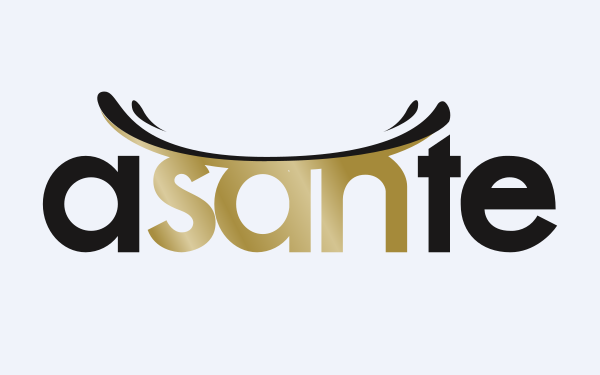
Vancouver, British Columbia// – Asante Gold Corporation today announced the completion of a Definitive Feasibility Study (DFS) assessing the technical and financial viability of extending the life of the Bibiani Mine through future underground operations.
All dollar figures are in United States dollars unless otherwise indicated. “We are pleased to confirm the potential for an underground mine development with an initial life of seven years at Bibiani.
This will incorporate 831,000 ounces of gold produced and an attractive all-in sustaining cost (“AISC”) of $1,035 per ounce,” Dave Anthony, CEO of Asante Gold said.
He added “Since Asante acquired the Bibiani property in 2021, we have revitalized the operation and reshaped the business plan.
We are on a path to achieving annual production of more than 250,000 ounces in 2026 and beyond, further supported by the commencement of underground mining in Q4 2025 and other growth initiatives that have already advanced.
These include the Bibiani-Goaso Highway bypass in June 2024 to facilitate access to additional mineralized material and completion of the new sulphide treatment plant, which is on track for Q2 2025.”
The DFS focused specifically on underground mining potential below the existing Bibiani Main and Walsh pits. It was developed and compiled by professional mining engineers from Bara International (United Kingdom) with Middindi Consulting (Geotechnical – South Africa) and SLR Consulting (Geohydrology – South Africa) as contributing sub-consultants.
Highlights
- Underground mine planning upgraded to a definitive feasibility level, reinforcing underground strategy as previously articulated at a pre-feasibility level in the April 2024 Bibiani technical report
- DFS highlights (underground reserves only, results stated at $2,500/oz gold price) o Mining of 11.93Mt of ore at 2.36g/t, based on underground reserves as of December 31, 2023
o Initial capital cost of $116 million over two years, net of pre-completion revenue from 33koz o Gold production of 798,000 ounces at AISC of $1,035/oz, post-project completion
o Post-tax NPV (5% discount rate) of $516 million with IRR of 71%
- Next steps: o Finalization of optimal combined Bibiani open pit / underground mine plan ongoing o Mining contractor selection expected by Q3 2025 o Underground mining commencement expected in late 2025, funded from open pit mining.
Mineral Resources and Ore Reserves
The DFS is based on the NI 43-101 published underground Mineral Resources and Ore Reserves that exist below the final pit in the life of the mine (“LoM”) for the current operations.
The reported Measured and Indicated Mineral Resource available is 17.40Mt at a grade of 2.34g/t Au, all contained within the Indicated Mineral Resource category.
The total underground mineral reserves reported in the DFS, available for extraction after detailed mine design and layout, is 11.93Mt at a grade of 2.36g/t Au for 0.93Moz Au, including Proven reserves of 0.09Mt at a grade of 1.41g/t Au and Probable reserves of 11.92Mt at a grade of 2.36g/t Au.
This is not materially different from the Underground Mineral Reserve stated in the Bibiani 2024 Technical Report of 0.02 Mt at 1.44g/t Proven and 12.12 Mt at 2.35g/t Probable for 0.92 Moz.
Ongoing geological exploration is aimed at upgrading Inferred Resources (15.18Mt at 2.36g/t Au) to support an extension of the estimated seven-year underground LoM.
Mine Design Strategy and Geotechnical Study
The DFS investigates the underground extraction from the Bibiani Main and Walsh orebodies. The base case considered for the open pit to underground transition was that open pit mining would continue to the extent of the viable life of open pit mining in the Main Pit (Pit 17).
When used as the basis for a preliminary financial model the resultant open pit operating cost per ounce of gold produced was $1,341/oz.
The DFS analysis indicates that the proposed underground mining costs are approximately $1,050/oz. From a relevant comparison of open pit and underground mining cost analysis, this equates to the original design of Pit thereby encouraging earlier curtailment of open pit operations and development of underground mining operations.
As such, the Main Pit stripping ratio is reduced significantly. The DFS addresses the differing geotechnical and rock engineering characteristics of the Bibiani Main and Walsh mineralized deposits and recommends appropriate mining methods.
All necessary rock mass and rock strength test work was carried out by Middindi Consulting to determine the optimal mining conditions and stable stope sizes. The subsequent mining design strategy determined for the Bibiani Main was sublevel open stoping with rockfill or transverse sublevel open stoping with cemented rockfill.
The recommended Walsh orebody mining method is mechanized cut and fill with rockfill. A rating system, which took all geohydrological and geotechnical characteristics into account, resulted in the optimal position of development to be in the footwall of the Main and Walsh orebodies.


